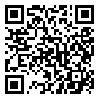Volume 28, Issue 4 (1-2023)
Back to this Issue |
Back to browse issues page
Download citation:
BibTeX | RIS | EndNote | Medlars | ProCite | Reference Manager | RefWorks
Send citation to:



BibTeX | RIS | EndNote | Medlars | ProCite | Reference Manager | RefWorks
Send citation to:
Khaloobagheri E, Kazemi M, Kazemi M. Comparing the effect of Hugo point pressure and auricular seed acupressure on pain after cesarean section: A randomized controlled clinical trial. Journal of Hayat 2023; 28 (4) :376-387
URL: http://hayat.tums.ac.ir/article-1-4726-en.html
URL: http://hayat.tums.ac.ir/article-1-4726-en.html
1- Trauma Nursing Research Center, Kashan University of Medical Sciences, Kashan, Iran
2- Dept. of Neurology, School of Medicine, Kerman University of Medical Sciences, Kerman, Iran
3- Dept. of Medical Surgical Nursing, School of Nursing and Midwifery, Rafsanjan University of Medical Sciences, Rafsanjan, Iran; Non-Communicable Disease Research Center, Rafsanjan University of Medical Sciences, Rafsanjan, Iran ,maj_kaz@yahoo.com
2- Dept. of Neurology, School of Medicine, Kerman University of Medical Sciences, Kerman, Iran
3- Dept. of Medical Surgical Nursing, School of Nursing and Midwifery, Rafsanjan University of Medical Sciences, Rafsanjan, Iran; Non-Communicable Disease Research Center, Rafsanjan University of Medical Sciences, Rafsanjan, Iran ,
Abstract: (1347 Views)
Background & Aim: Reducing pain after surgery, especially cesarean section is one of the most important factors for maternal and infant health. Choosing the way of reducing pain with fewer complications has drawn the attention of researchers. The aim of this study was to compare the effect of Hugo point pressure and auricular seed acupressure on pain after cesarean section.
Methods & Materials: In this clinical trial, 168 pregnant women who were candidates for cesarean section, referred to the educational and medical centers of Rafsanjan University of Medical Sciences in 2020, were selected through purposive sampling and randomly divided into three groups: Hugo point pressure, auriculotherapy, and control. In the Hugo group, massage was applied on the li4 point (between the thumb and forefinger) for 10 minutes. 24 hours later, the intervention was repeated. Before and after the intervention, pain intensity was measured using the Visual Analogue Scale (VAS). In the auriculotherapy group, earrings were placed on the Shenmen point located in the earlobe. Pain was assessed by the VAS 20 minutes after the intervention and 24 hours later. No intervention was performed for the control group and only the researcher was present next to the studied subjects for 10 minutes. Data were analyzed by the SPSS software version 20 using paired t-test and one-way analysis of variance (ANOVA). P<0.05 was considered significant.
Results: The average pain score in the Hugo group was 6.70±1.55 before the intervention and 6.20±1.78 after the intervention (P=0.026). In the auriculotherapy group, the average pain score before the intervention was 5.99±1.75 and after the intervention was 4.66±2.01 (P<0.001). No significant difference was observed in the average score of pain intensity on the first day between the two groups, before the intervention (P=0.062). But the average score of pain intensity on the first day after the intervention was lower in the auriculotherapy group compared to the other two groups (P<0.001). On the second day, there was a significant difference in the average pain score between the three groups after the intervention (P=0.009).
Conclusion: The results of this study showed that both auriculotherapy and the Hugo method are effective for reducing pain after cesarean section; but the continuance of pain reduction after auriculotherapy was more than Hugo point pressure. These methods can be used along with other pharmaceutical methods to reduce pain after cesarean section.
Clinical trial registry: IRCT20131228015965N17
Methods & Materials: In this clinical trial, 168 pregnant women who were candidates for cesarean section, referred to the educational and medical centers of Rafsanjan University of Medical Sciences in 2020, were selected through purposive sampling and randomly divided into three groups: Hugo point pressure, auriculotherapy, and control. In the Hugo group, massage was applied on the li4 point (between the thumb and forefinger) for 10 minutes. 24 hours later, the intervention was repeated. Before and after the intervention, pain intensity was measured using the Visual Analogue Scale (VAS). In the auriculotherapy group, earrings were placed on the Shenmen point located in the earlobe. Pain was assessed by the VAS 20 minutes after the intervention and 24 hours later. No intervention was performed for the control group and only the researcher was present next to the studied subjects for 10 minutes. Data were analyzed by the SPSS software version 20 using paired t-test and one-way analysis of variance (ANOVA). P<0.05 was considered significant.
Results: The average pain score in the Hugo group was 6.70±1.55 before the intervention and 6.20±1.78 after the intervention (P=0.026). In the auriculotherapy group, the average pain score before the intervention was 5.99±1.75 and after the intervention was 4.66±2.01 (P<0.001). No significant difference was observed in the average score of pain intensity on the first day between the two groups, before the intervention (P=0.062). But the average score of pain intensity on the first day after the intervention was lower in the auriculotherapy group compared to the other two groups (P<0.001). On the second day, there was a significant difference in the average pain score between the three groups after the intervention (P=0.009).
Conclusion: The results of this study showed that both auriculotherapy and the Hugo method are effective for reducing pain after cesarean section; but the continuance of pain reduction after auriculotherapy was more than Hugo point pressure. These methods can be used along with other pharmaceutical methods to reduce pain after cesarean section.
Clinical trial registry: IRCT20131228015965N17
Send email to the article author
| Rights and permissions | |
 |
This work is licensed under a Creative Commons Attribution-NonCommercial 4.0 International License. |







